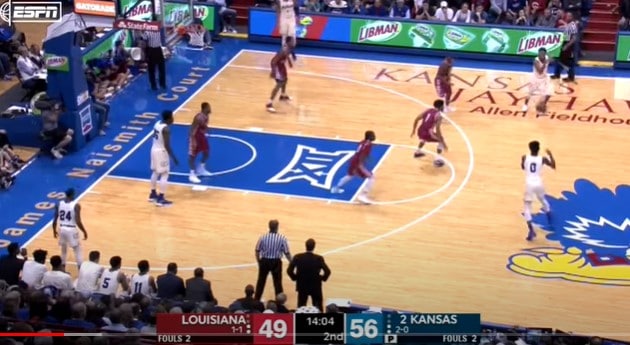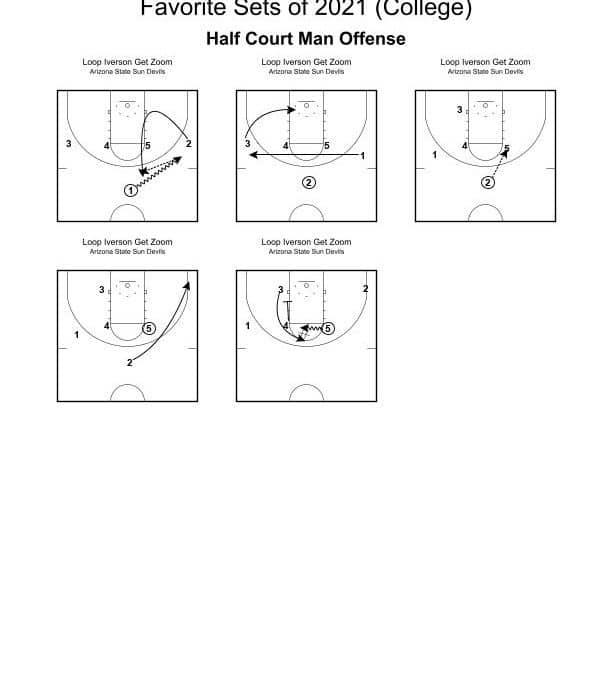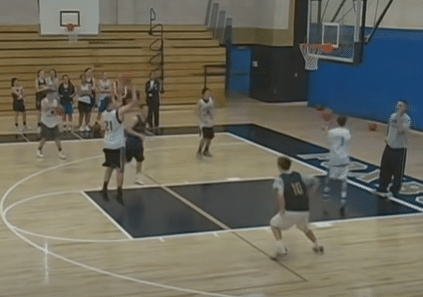Special Situations | Time and Score Situations by Kevin Furtado
The following is from my coaches playbook that I have used for many years of high school coaching. I do feel that Special Situations like “Time and score” must be practiced on a daily basis for your team to execute at crunch times of games. Below is my basic philosophy of our time and score playbook.
Basic Rules
Anytime our team is in the last three minutes of a game we have our player’s follow these rules to control the special situations:
• Maintain constant mental concentration and poise (good players get it done under pressure).
• Stay in our offensive pattern and continue to move and work for a good shot. (movement is vital- stir the defense).
• Read the defensive player on every pass (anticipate a gamble by the defense).
• Go inside more than normal for the very high percentage shot (layups, six-footers, foul shots).
• Get the ball on the foul line by keeping constant basket pressure on the defense (foul shots are money in the bank).
• Be very alert to the offensive boards- 2nd and 3rd shots are certainly most critical here.
• Save three timeouts for the very end of the game.
The above rules can be followed only if our players are in excellent physical condition and we work with them on various special situations like time and score during practice.
AHEAD: Offense
If at this point our team is ahead, we should have us looking for either foul shots or a layup, although it would be best simply to get into our 4-corners set and run out the clock. We should never completely take away the thought of scoring on our opponents because I have seen too many games lost when the offensive team attempts to “freeze” the ball and plays not to lose instead of playing to win. If our team starts playing not to lose, the defensive team begins to control the tempo of the game and our team, in playing not to make mistakes, will begin to play so cautiously that the defense will be able to take advantage of them. We always want our players to attack the defense and look to score.
AHEAD: Defense
If we are on defense and ahead by 3 or more points during the closing seconds we force our opponents to drive by running at the dribblers and thus not allowing them to attempt any three point shots. Under these circumstances we want our defensive player to get beaten on the dribble since this will force the offensive players inside the three point arc or least force them into making more passes to get the shot off. If we are successful in making them drive do not let our perimeter players to rotate off their players to stop the penetration because doing so will allow their players to spot up around the arc for the three point shot. We can also disrupt their order and timing in the last seconds by pressing or double-teaming to create turnovers or rushed shots.
BEHIND: Offense
If we are behind similar tactics prevail. We should look for a layup or a six footer, but it would be best to get the foul in this situation. This enables us to set our defense as well as save valuable time since we are scoring with the clock stopped. The defense will be extended to prevent the three point shot if we are down by more than two and it is here that we must read the time and score situation to decide whether we want a two point basket or whether we want to attempt a three point shot. If we are behind by 4 or 5 points we will still need two possessions to tie or win the game so it may be advisable to get two points if they can be gotten quickly. In this situation the amount of time left in the game as well as the number of time outs will determine which shot is the best to attempt. There are many other variables that go into this decision such as the personal foul situation, what the opponent is shooting from the foul line, who is shooting well for us, and whether we are making a run at them defensively.
BEHIND: Defense
Our defense will have to do a great deal more for us than our offense in this situation since we are more likely to shoot layups off of steals and interceptions as the offensive team spreads out and generally moves away from the scoring area. If our team is down do not give in to the urge to shoot three point shots too early in an attempt to get back into the game. We need to chip away at the lead, playing hard nosed defense, and allowing our opponents only one opportunity at the basket. The percentage foul inside 30 seconds is another good catch up tool but remember our job will be easier if we work hard to gain control of the game in the early part of the 4th quarter.
Half-Court Offenses: BEHIND
If we are trailing late in the game we will run our man to man offense or zone offense and use the sets that will get us shots for our best scorers. By using these sets we can get the ball to a specific player at the end of a game. If our team follows the principles of our team offenses, I believe we can get a good shot when we most need one at the end of a game.
Half-Court Offenses: AHEAD
If we are ahead and we want to take time off the clock while remaining offensively active, we use our 4-corners or triangle offenses. We like to keep the defense spread out and look to dribble penetrate into the gut of the defense if pressured. We will look to attack for only open, uncontested layups.
Communication In The Time and Score
I have a series of codes that helps me communicate to my players how I want them to play as time runs down:
Code: “Bleed”: If we are in code “bleed”, we want to either stop the clock or get the ball as quickly as possible. This situation, just like all others, must be reviewed in practice. It is not enough for my players to know that they are supposed to foul, but they must understand what it means to make an attempt for the ball without being punished for an intentional foul. In addition, in trying for the ball we may steal it which is what we need in the first place.
Code: “Spread”: If we are in code “spread” we want to keep the clock running. Although we are playing more against the clock than we are against the opponent, we must continue to look to score so that we avoid playing not to lose and continue to play to win. We keep the clock running by spreading the floor on offense and making sure that we do not foul on defense.
I emphasize the importance of late game play by working special situations like time and score every day in practice to condition my players to react positively to this vital phase of the game. I believe that most big games between two evenly matched teams will be decided in the closing stage so my players must be physically and mentally prepared. My players know our system has been proven and they believe that we can win all our close games because of our emphasis in this area. This is a healthy mental attitude for any player to have.
If you have any questions, you can contact me.
Coach Kevin Furtado
Coach Kevin Furtado Bio: I have coached girls varsity basketball for 22 years at both public and private schools. I have coached in Georgia, Virginia and Kentucky and have collected 369 wins in my career. I have collected basketball clinic notes from 1990 to 2013 that I will be sharing with you.
Follow Coach Kevin Furtado on Twitter!!!
Click on the pdf link to download the basketball coaching notes:
Special Situations | Time and Score Situations by Kevin Furtado
Click on the pdf link to download the special situation plays:
Special Situations Plays by Kevin Furtado





0 Comments